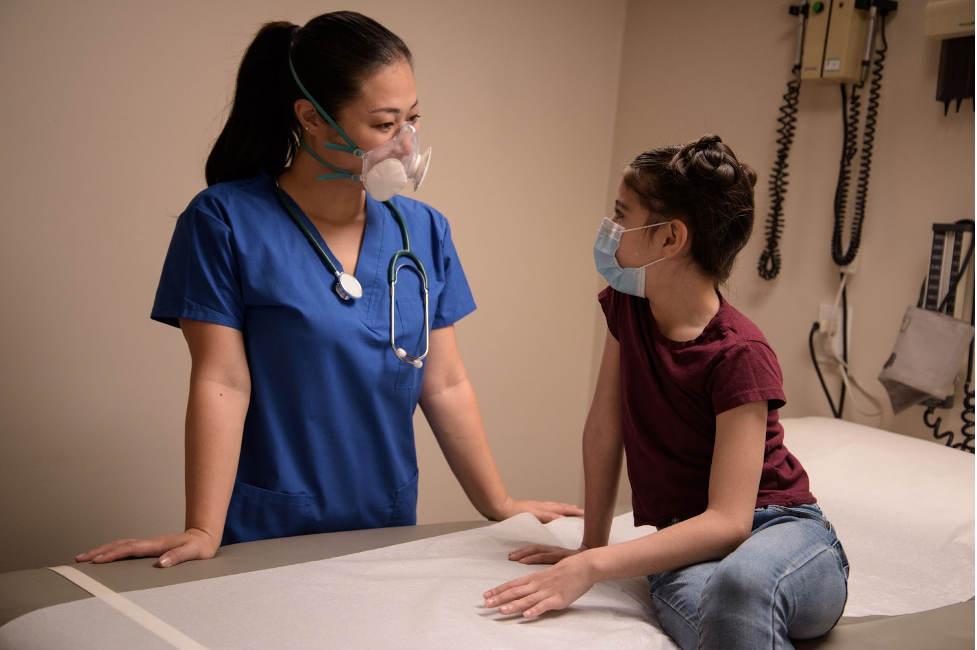The Impact of Face Masks on Doctor-Patient Communication
Imagine a patient coming to the hospital with an issue and getting treated by a physician — only the patient can’t fully understand what’s wrong. Whether they’re hard of hearing, deaf, have low English proficiency, or something else, N95 masks can make it difficult to communicate clearly. In turn, the patient may feel especially scared and upset, and they may misinterpret a diagnosis for something more or less severe.
Not only could this decrease the patient’s level of care, but it could be dangerous. Doctor-patient communication is extremely important, and unfortunately, opaque face masks can be a hindrance.
What Is Patient Communication?
Doctor-patient communication is critical to a patient’s overall care. Essentially, a physician needs to be able to explain a patient’s issue and recovery plan, while also setting realistic expectations. Although when speaking with a patient or providing educational materials, they may need to adjust their level of language used.
The average American adult reads at a 7th or 8th-grade level. That’s why the American Medical Association, the NIH, and the U.S. Department of Health and Human Services encourage patient education materials to be written at a 4th to 6th grade reading level.
Additionally, facial expressions and emotions are other important factors in doctor-patient communication, especially for those who are hard of hearing or English isn’t their first language.
The Impact Of Standard Face Masks On Doctor-Patient Communication
While face masks and respirators are critical for keeping healthcare workers safe from potentially harmful airborne particles, they can hinder doctor-patient communication. Traditional opaque N95 respirators can degrade speech quality, which makes it hard for patients to understand. Of those who have a hard time understanding, on average, 32% of those patients are likely to be readmitted. This is an especially significant problem as nearly 48 million Americans suffer from Debilitating Hearing Loss.
Additionally, a 2013 Hong Kong study used the Consultation and Relational Empathy (CARE) measure to find that patients perceive diminished empathy when doctors wear masks. This obviously has a negative impact on the doctor-patient relationship.
How Clear Face Masks Help With Doctor-Patient Communication
Transparent face masks or respirators can help break down some of the barriers that traditional face masks present, such as the ability to read physicians’ emotions, facial expressions, and lips when speaking.
A 2022 study used members of the general public, healthcare workers who are deaf or hard of hearing, and healthcare workers who aren’t to evaluate the ability to communicate using transparent and standard face masks. Over 75% of participants were able to identify the emotions expressed by the speaker, and the majority felt that communication was improved. Comparatively, less than 25% of participants could identify emotion when the speaker wore an opaque N95 mask.
Teal Bio Is Designing a Transparent Reusable Respirator
The Teal Bio Respirator is being designed to have a clear, silicone mask body that will allow for improved doctor-patient communication. This is important to the patient’s overall care. However, a clear mask could also help physicians to communicate better with each other when designing a hospital care plan for a patient.
Nonetheless, there are added benefits of a clear mask beyond improving communication. Teal Bio’s silicone mask body is designed to be moldable, so it can fit more healthcare workers’ faces without sacrificing comfort for longer shifts. The clear silicone is also reusable — it’s easy to disinfect, and, when used properly, it can be worn for up to one year. It will have wide-set, partially biodegradable filters crafted with a specially-formulated wool blend to keep airborne particles out. So, it could also help reduce the cost and waste of single-use N95 masks.
Right now, N95 respirators are the only type of PPE that can provide adequate respiratory protection. However, they could fault physicians when it comes to communicating.
The Teal Bio Respirator aims to keep healthcare workers safe while improving doctor-patient communication. The goal is to allow patients to do their jobs more efficiently and improve patient care. You can learn more about the Teal Bio Respirator on our website and join the waitlist today.





